Best Bonsai Plants for the Office
Thank you for reading our detailed article on office bonsai plants. It forms part of a series of articles that we believe you may enjoy. If you like this one, please feel free to read our others:
1. Best bonsai plants for the office (you are here) 🌳
2. Best small bonsais for windowsills
3. What succulents can you grow as bonsais?
4. Best water-friendly bonsais
5. Bonsai linked to better office productivity
6. How bonsai helps with focus and goals
7. Bonsai wedding gift for your colleague
We’re sure many of you have considered obtaining bonsai plants for the office. It brings new life to the place, while you will be the envy of your colleagues. Or maybe you have an office to yourself, and you need some company?
Whatever the reason, there as some aspects you need to consider before taking such a big step. Bonsais generally love an open environment, replicating trees in the wild. That doesn’t mean it’s not possible to have one on your desk.

Here’s what we cover in our office bonsai guide:
Here’s what we cover in our office bonsai guide:
Can you Keep a Bonsai Tree in an Office?
The short answer is yes, you can have bonsai plants for the office. Many of them thrive in such conditions. As long as you care for them based on the specific requirements, there’s no reason it shouldn’t enjoy living on your desk.
The longer answer is always more technical. There are some key factors to consider before you bring one indoors to where you work. We’ll discuss these key points a bit later. For now, let’s see which bonsai species will do well in your office.
Top Bonsai Plants for the Office
While there are many office bonsai plants you can look into, we picked a few favorites that are known for doing well in indoor, work environments. They’re easy to maintain, and some of them will put on a delightful show when the flowers appear.
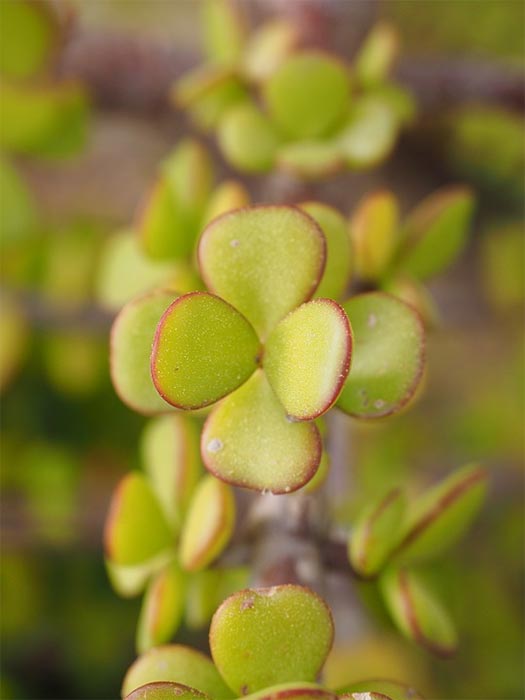
Dwarf Jade
Portulacaria afra, also known as the Dwarf Jade, is a resilient succulent that makes an excellent office desk bonsai tree. You can easily design and shape it so that it remains the ideal size for your workspace. The red-brown bark complements most wooden tables, while the oval green leaves provide that perfect contrast.
It’s quite capable of living in low-light conditions for a lengthy period. If you notice the leaves turning yellow, you can place the tree on a windowsill or outside for a few hours in the morning every day to recuperate. It’s also comfortable with seldom receiving water, but you should check for signs of the leaves shriveling.
Weeping Fig
The Weeping Fig is one of the more common Ficus trees that people use as a bonsai. It has a stunning glossy sheen on the leaves, while the droopy design gives any office environment a pleasing touch. If you add some rose quartz to the equation, it will give the space a sense of rejuvenating energy.
While the Ficus benjamina is mostly used as a houseplant, it does very well as one of the best bonsai plants for the office. It can handle low light for several weeks, as long as there’s some indirect sunlight from a nearby window. It’s also known for surviving poor conditions for a long time.
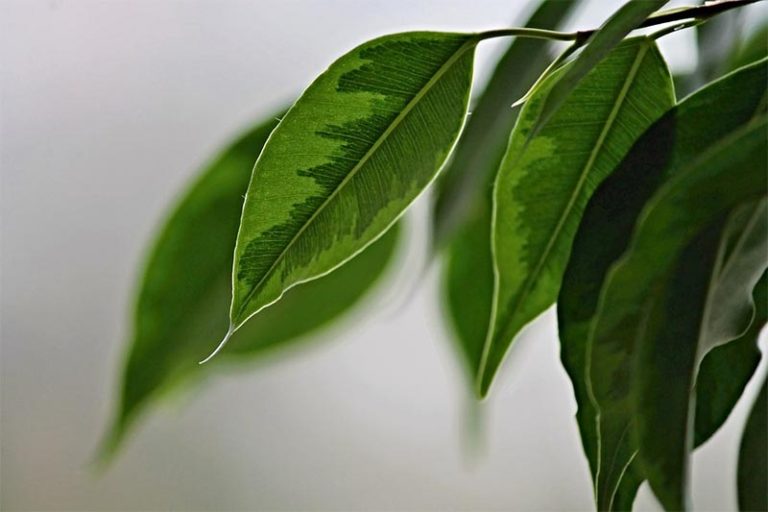

Image courtesy of 4.0 International
Jasmine Star
The Grewia occidentalis is native to South Africa, but you can find them in a few other countries as a bonsai. The small purple flowers are stunning to behold, and we’re sure your manager may stop by your desk to smell the sweet scent of the pollen. You’ll need to have a healthy dose of sunlight from a window if you want a brilliant display of blossoms in summer, though.
Also known as the Crossberry, it has tiny, round berries if the flowers are somehow pollinated. If you’re in a closed environment most of the time with insufficient airflow, there’s a minimal chance you’ll see fruit. Still, you’ll love the show the bonsai puts on in your office with its glossy green leaves and light brown stem.
Money Tree
Pachira aquatica is another one of the bonsai plants for the office that you may see on many desks today. The braided design looks outstanding, and no two trees look alike. You can also braid one yourself for a unique touch if you want to impress your colleagues.
The primary reason so many people use it as an office desk bonsai tree is due to the belief that it brings luck and fortune. Besides personal motivations, some managers hope it will help the business succeed. There are some people who apply the Feng Shui technique with the Money Tree to maximize its magical potential.
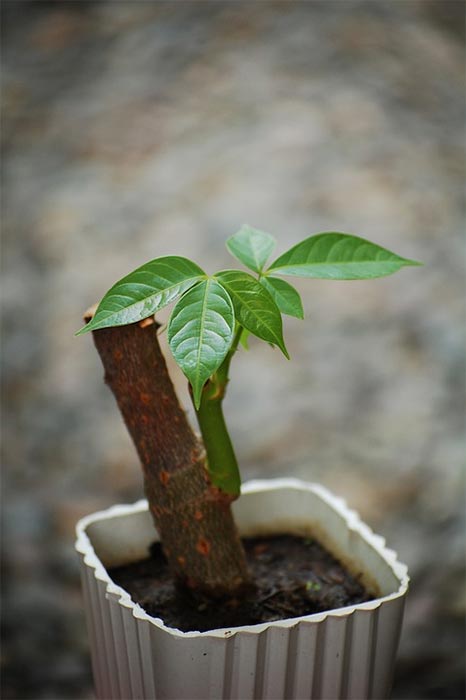
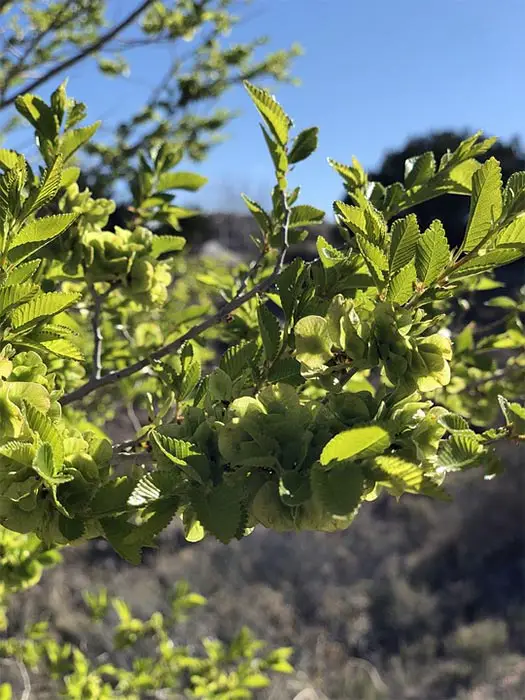
Money Tree
Pachira aquatica is another one of the bonsai plants for the office that you may see on many desks today. The braided design looks outstanding, and no two trees look alike. You can also braid one yourself for a unique touch if you want to impress your colleagues.
The primary reason so many people use it as an office desk bonsai tree is due to the belief that it brings luck and fortune. Besides personal motivations, some managers hope it will help the business succeed. There are some people who apply the Feng Shui technique with the Money Tree to maximize its magical potential.
Coral Tree
Erythrina lysistemon is a special treat for anyone fond of Valentine’s Day or romance. It has leaves that look like hearts, while the flowers have a red trumpet design. The flower clusters put on a fantastic display in summer, and it will make your desk stand out among the rest if you’re in an open-place workspace.
Since this bonsai prefers full sun, it will do well in work environments with large windows. It can be quite thirsty in summer, so you’ll need to water it daily. Out of all the bonsai plants for offices we’ve mentioned, this one probably needs the most attention.

Factors to Consider For Office Desk Bonsai Trees
Just because you can place a bonsai tree in your office, it doesn’t mean you should. There are some elements you’ll need to look at first, which may restrict you in your options. You need to make 100% it’s safe to place it in your work environment before you buy one.
Air Conditioning
The one aspect that bonsais aren’t fond of in an indoor area is air conditioning. Most aircons tend to reduce the humidity, which is something trees love. Some species also don’t like temperatures that are too high or low. While it’s alright to have an AC on, it’s best if you keep the bonsai as far from it as possible while providing some misting.
Light Sources
We’ve mainly focused on bonsai plants for the office that do well in low light conditions. If you’re aiming for other species, we recommend you place them near a large window or an open door that lets in sunlight in the morning hours.
Should this not be an option, you can look into buying a grow light, as standard office illumination isn’t enough. It lacks the natural energy the sun provides and only serves to help you see what you’re doing in the office.
Allergies
You need to keep in mind that some people are allergic to pollen. If you have colleagues that can’t be near flowers, you may want to carefully consider buying bonsais that don’t bloom. The last thing you want is a complaint sent to HR that your miniature trees are causing their medical bills to spike.
Office Policies
Another factor that may restrict you from buying bonsai plants for the office is any policy in place against plants in the workplace. Companies sometimes put it in place to prevent having to clean any mess made from soil falling on carpets. In other cases, CEOs just don’t like plants at all, or will only permit specific species that they purchase with corporate funds.
Educating your Colleagues
If you are able to place bonsai trees on your office desk, be prepared to educate your colleagues on the fine art. Firstly, they’ll be curious and will be asking you loads of questions about the species and how you look after them. More importantly, you’ll need to explain to them why they shouldn’t touch the leaves and stems too much.
Signage
On that last point, it won’t hurt to put small signage near the bonsai informing your colleagues not to tamper with your bonsai when you’re away from the office. Some people prefer to ask for forgiveness instead of permission, and you may return to a broken branch or foliage. It’s a sad part of human nature that many can’t keep their hands to themselves.
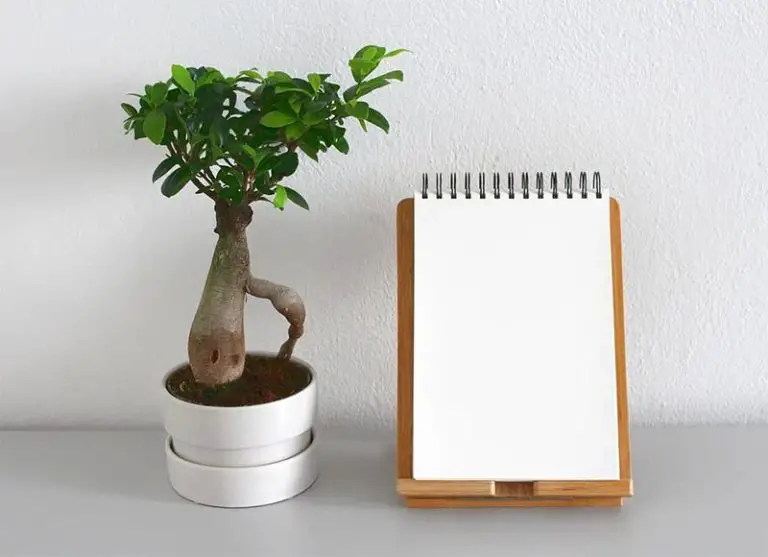
Guidelines to Care for Office Bonsai Plants
Now that the major concerns are out of the way and you’re ready to buy a bonsai plant for the office, it’s time to look at how to look after them. Besides the basic bonsai tree care requirements, we’ll show you specifically how they apply to the work environment. In this way, you’ll know exactly how it differs from growing them at home.
Watering
Like with any bonsai tree, you’ll need to check the soil to see whether it’s dry or wet. Usually, you’d water daily in summer and twice a week in winter. However, the conditions in your office won’t always be the same as at home.
Most companies like to keep the indoor environment warm throughout the year. Your bonsai may not realize winter has arrived, especially if the building is well insulated. It may remain thirsty throughout the season, so keep an eye out for that moisture.
Speaking of which, you’ll need to use a tray for the drainage. Your boss won’t be too happy if the pot leaks all over the desk. It will be best to have some drainage stones at the bottom of the pot to ensure that the liquid doesn’t drown the roots.
Location
We’ve mentioned how essential light is to some bonsai species. You’ll need to think carefully about where to place your tree to receive as much sunlight as possible. Another aspect to consider is if there are draughts from any open doors or windows. For example, the Japanese Maple isn’t too fond of it, and you may see some leaves die.
Air Circulation
Besides proper humidity and temperatures, we recommend you allow some air circulation to assist with keeping the leaves healthy. It promotes the gaseous exchange from carbon dioxide to oxygen, while also helping to remove any lingering moisture.
Besides opening the window, you can use a fan to move the air around, as long as it isn’t permanently directed on your tree. An oscillating tower or desk fan works wonders, especially in summer when the temperatures soar through the roof.
Maintenance
One aspect that’s also expected for any bonsai is pruning. There’s maintenance pruning in spring and summer and design trimming in winter. The reason why we mention it specifically for the office is that you’ll need to be careful how you do it.
You don’t want a mess on your desk, so you may want to take it outside. It’s especially essential when repotting, as you don’t want soil on your table or the carpet. The company’s cleaners won’t be happy with you, and you may receive a warning if you have a strict manager.
Another option is taking it home with you and working on it there before bringing it back. It saves you from keeping all your tools in an office drawer. It doesn’t hurt to keep a small pair of pruning scissors for when the leaves shoot out in spring, though.
Vacation Time
Since we’re talking about taking the bonsai home, let’s take a moment to discuss vacation time. Some species stress when moved around a lot, so transporting your tree around may not be a good idea. But what happens when you’re taking a three-week vacation?
If you’re planning to leave it in the office, it’s vital that you deputize someone to care for the bonsai tree while you’re gone. They need to understand exactly what is needed, even if you only want them to water every day. You don’t want to come back from a peaceful time at home to find it dilapidated.
Pest Control
While we’re sure you know about pests and how to remove them, there’s something specific we want to mention that applies to bonsai plants for the office. Many businesses have pest control services in place. These contractors visit your building at regular intervals to place rat poison and spray chemicals on the carpets.
Don’t expect them to know about plants and bonsais. Someone might think it’s a good idea to spray your leaves if they see signs of mold. The chemicals also linger in the air for a few hours, and they may harm the leaves. It’s best to move them out of the building until the air has settled, so to speak.
Construction and Renovations
Whether there’s a massive refurbishment or a small panel to cut in a partition wall, you can be assured there will be dust and dirt. When these cling to leaves, your bonsai tree will have a tough time breathing. They can also fall onto your soil, which mixes with the nutrients when you water again.
As with pest control, it’s better if you move your bonsai plant to a different office area. You might even consider taking it home if the construction project timeframe is a few months. If you have a courtyard at work, you can consider placing it there; which brings us to the next section.
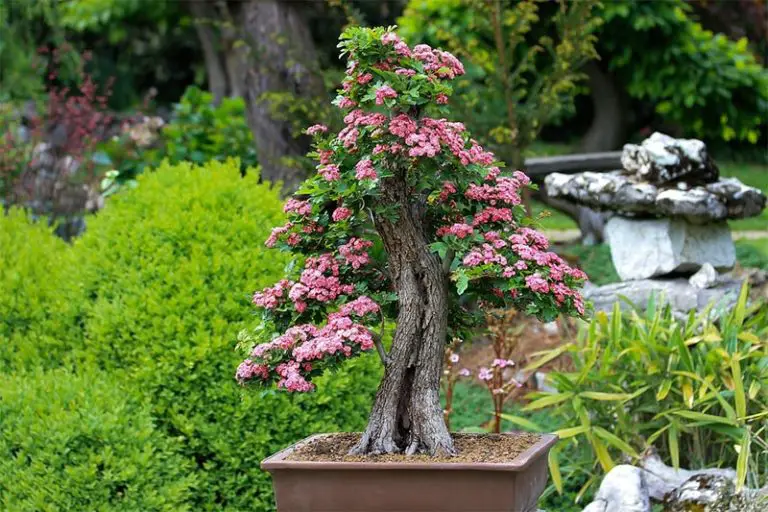
Developing a Communal Work Bonsai Area
If you’re lucky enough, you work for a company that’s not opposed to having a communal area filled with bonsais. It can be an open courtyard where everyone meets for lunch. In some buildings, the landlord or owner has prayer areas set up for various religions, which is a prime spot for bonsais.
Of course, this is a less personal approach to the office desk bonsai tree. Still, it’s a wonderful way to encourage colleagues to enjoy the wonder of these marvelous specimens. We’ve even seen companies who have koi ponds, with the bonsais either in or around the water.
If you work in an office located by a church or temple, your chances are even better at having a communal bonsai area. Trees are significant symbols for most religions, and there’s often some meaning to the bonsai species. They create havens of peace around which the members can pray and reflect, making them feel closer to their chosen deities.
Finally, you’re incredibly fortunate if you work for a community park or a municipal entity. The government usually has departments that look after nature reserves. More often than not, they have cuttings and nurseries, and you can ask them to help set up your bonsai resting area.
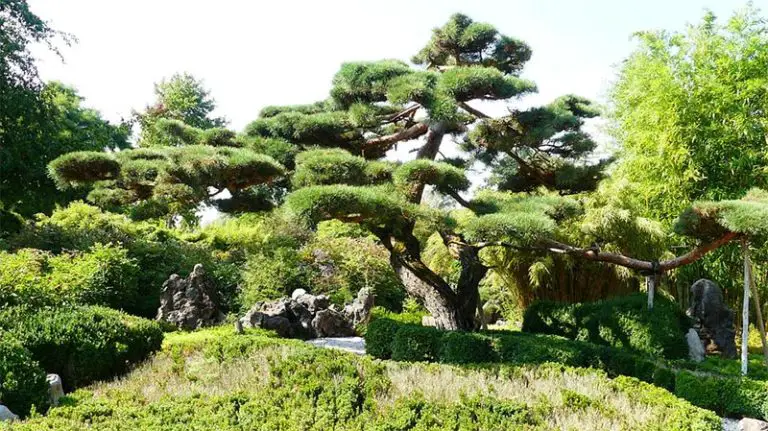
Benefits of Growing Bonsai Plants in the Office
We’d like to end this article on a good note. You might be wondering if there’s any value in obtaining bonsai plants for your office. We’ll give you a few good reasons why we believe you should do so.
Improving the Mood
The office environment can be dull at the best of times, especially if you perform the same tasks daily. Having a bonsai tree as a companion works wonders, especially if you need someone, or something, to complain to. Sometimes just taking a moment to prune some leaves can help in alleviating stress. Your tree will also enjoy the energy you pass it while spending time with it.
Introducing a New Office Culture
They say a change is as good as a holiday. If you and your colleagues have had a few rough months, it doesn’t hurt to introduce them to a new bonsai culture. You never know; you may just be helping someone deal with troubles in their life.
Increased Oxygen Levels
Many governments plant as many trees as they can, as they convert carbon dioxide into oxygen, and help improve the air quality. The same applies to bonsai plants for the office. If you have a few trees with dense foliage, you can improve the quality of life in your work environment more naturally.
Adding Color and Texture
Another dull aspect of some corporate environments is that the colors are all the same, or blend in a way that looks unappealing. If you ask any interior decorator worth his degree, they’ll tell you that plants are excellent in adding color and texture within offices without having to paint or change carpets. You can also move them around to find that perfect balance.
Final Thoughts
Buying bonsai plants for your office has several advantages for you and your colleagues. However, there are so many potential problems that many people refrain from doing so. If you plan it properly, there’s no reason you can’t make it a reality.







